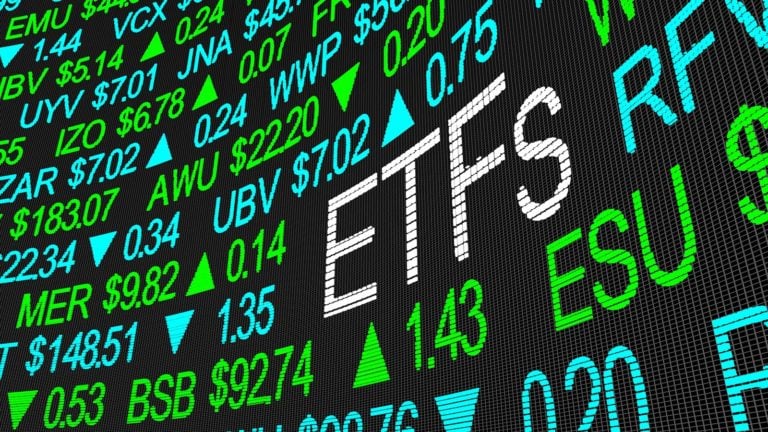[Editor’s note: “5 High-Fee ETFs Worth Buying Despite Hefty Expense Ratios” was previously published in June 2019. It has since been updated to include the most relevant information available.]
It is not up for debate that one of the primary selling points of exchange-traded funds (ETFs) is low fees. Earlier this year, Morningstar said investors saved $5.5 billion last year due to declining fund fees, including ETFs.
“The study found that across U.S. funds, the asset-weighted expense ratio dropped to 0.48% in 2018, compared to 0.51% in 2017,” according to Morningstar. “As a result, investors saved an estimated $5.5 billion in fund fees in 2018. This 6% percent year-over-year decline is the second largest recorded since Morningstar began tracking asset-weighted fees in 2000.”
In more good news for ETF investors, fees are falling. As part of their efforts to lure investors, fund sponsors are continually lowering expense ratios on ETFs, some to rock-bottom levels, or in some cases, no fees at all.
A byproduct of all these cheap ETFs on the market is that investors frequently think that the cheapest funds are the best funds. While fees certainly are a meaningful consideration for long-term investors, there are cases where higher-priced ETFs merit those higher fees.
Consider the following, hypothetical example. ETF “A” and ETF “B” both track tech stocks. ETF charges 0.50% per year, or $50 on a $10,000 investment, while ETF “B” charges 0.10%. Over the past five years, ETF “A” is up 100% while ETF “B” is up just 50%. Simple math says ETF “A” was the better ETF to buy despite its higher fee.
Here are some higher fee ETFs to buy that earn those expensive expense ratios.
Cambria Shareholder Yield ETF (SYLD)

Expense ratio: 0.59% per year, or $59 on a $10,000 investment.
There are plenty of inexpensive dividend ETFs on the market today and most of the funds that are dedicated to the buyback theme are not really expensive, either. However, the Cambria Shareholder Yield ETF (CBOE:SYLD) has a unique approach to shareholder rewards that merits paying up for.
This ETF to buy has nearly $124 million in assets under management and tracks the Cambria Shareholder Yield Index. That benchmark is “comprised of the 100 companies with the best combined rank of dividend payments and net stock buybacks, which are the key components of shareholder yield,” according to Cambria.
With SYLD, investors are also getting multi-factor exposure because many of its holdings are considered to be quality and/or value stocks. This ETF to buy devotes about 50% of its weight to the financial services and consumer discretionary sectors.
First Trust North American Energy Infrastructure Fund (EMLP)

Expense ratio: 0.95%
There are master limited partnership (MLPs) with higher fees than the First Trust North American Energy Infrastructure Fund (NYSEARCA:EMLP) and there are some with lower fees. On a standalone basis, EMLP’s annual expense ratio is high relative to the broader universe of passively managed ETFs and actively managed mutual funds. This ETF to buy is an active fund.
Simply put, this ETF to buy earns its above-average fee because, even through some trying times for the energy sector, EMLP delivers performance. Since bottoming in December 2018, EMLP is up about 25%, dominating a slew of cheap MLP and broader energy sector funds along the way.
Credit the active management behind the fund. Moreover, EMLP’s risk-adjusted returns are stellar as the fund has displayed significantly less volatility than rival MLP and energy ETFs during that period.
VanEck Vectors Preferred Securities ex Financials ETF (PFXF)

Expense ratio: 0.4%
To be fair, the VanEck Vectors Preferred Securities ex Financials ETF (NYSEARCA:PFXF) is cheaper than all but one preferred stock ETF, but this ETF to buy is considerably pricier than traditional bond funds. Regardless of how investors view PFXF’s expense ratio, this is an ETF to buy because it is one of the best options in this particular asset class.
Over the three years that ended in June, PFXF beat the largest preferred ETF by 410 basis points and for yield-hungry investors looking for more flair with their fixed income offerings, PFXF topped the Bloomberg Barclays Aggregate Bond Index by wide margins over those three years despite carrying a higher fee than funds tracking that bond benchmark.
Invesco Dynamic Software ETF (PSJ)

Expense ratio: 0.57%
Domestic sector funds are inexpensive. Some sector ETFs even have annual fees of just over 0.08%, but when it comes to industry funds, such as those tracking software stocks, investors should expect to pay more. However, the Invesco Dynamic Software ETF (NYSEARCA:PSJ) is pricey compared to the broader universe of domestic equity sector funds.
Still, this is an industry ETF to buy for tech investors. PSJ’s underlying index uses a unique methodology that “is designed to provide capital appreciation by thoroughly evaluating companies based on a variety of investment merit criteria, including: price momentum, earnings momentum, quality, management action, and value,” according to Invesco.
Here are two factors making PSJ an ETF to buy: 1) over the three years that ended in June, the fund has trounced broader technology ETFs and the Nasdaq-100 Index 2) PSJ has a five-star Morningstar rating.
ProShares S&P MidCap 400 Dividend Aristocrats ETF (REGL)

Expense ratio: 0.40%
The ProShares S&P MidCap 400 Dividend Aristocrats ETF (CBOE:REGL) is by no means alarmingly expensive. It is merely pricey compared to basic, passively managed index funds that track the S&P MidCap 400 Index. That is not surprising because dividend funds are usually more expensive than basic cap-weighted equity strategies.
REGL follows the S&P MidCap 400 Dividend Aristocrats Index, which mandates that member firms have boosted payouts for 15 consecutive years. The strategy is a winner. Over the three years that ended in June, this ETF to buy has outperformed the S&P MidCap 400 by nearly 200 basis points with less volatility.
REGL allocates 54% of its weight to financial services and industrial stocks.
Todd Shriber does not own any of the aforementioned securities.
